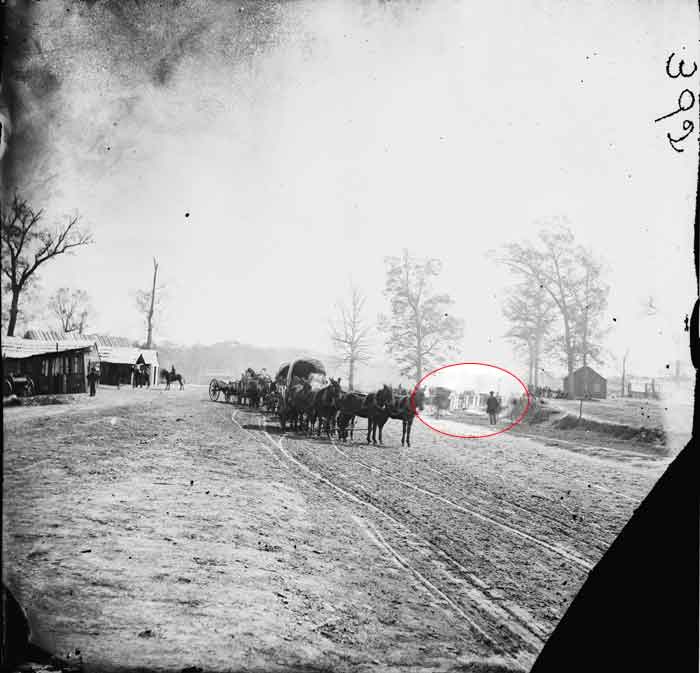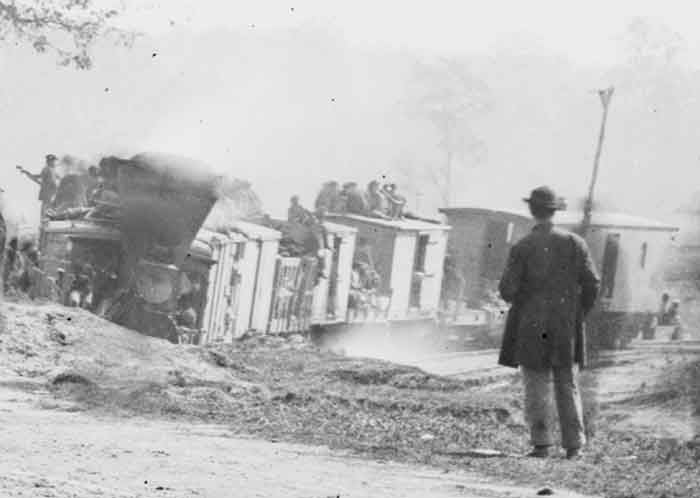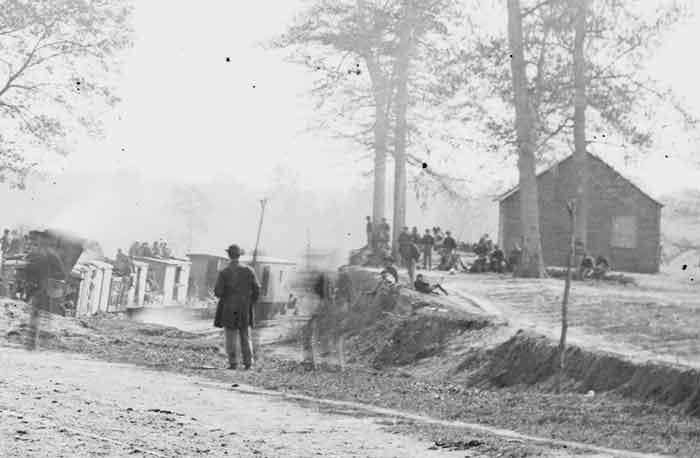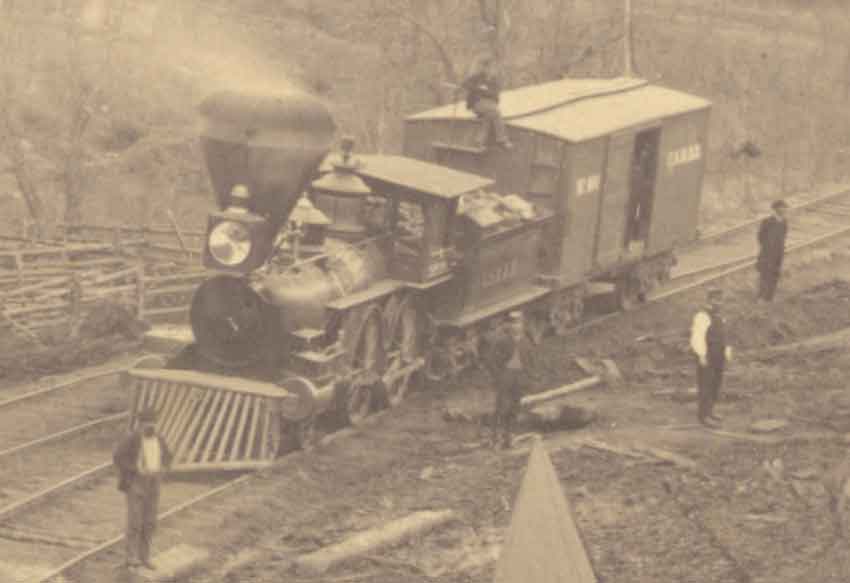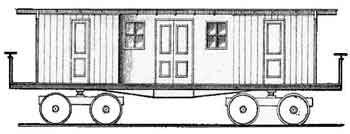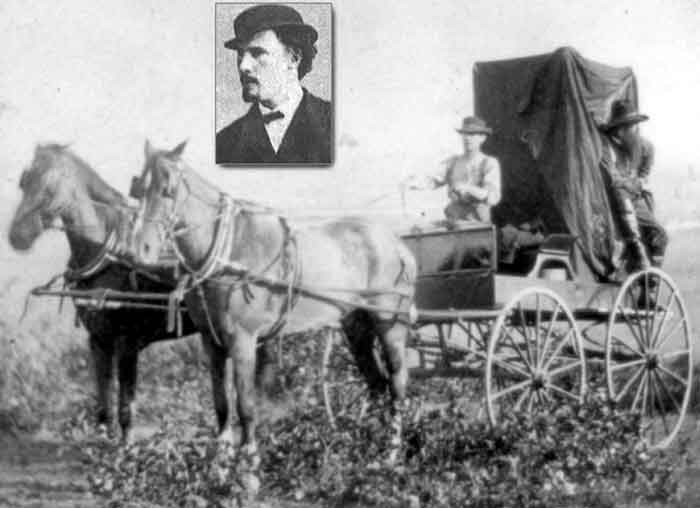Photograph by William Pywell Captures Scenes
at the Big Black River Station in 1864
By
James &
Rebecca Drake
|
William Redish Pywell, a young Baltimore photographer, moved to Washington to work under the master photographer Matthew Brady. In 1863 at the age of 19, Pywell was assigned to Vicksburg to capture scenes associated with the Civil War. A photograph taken at the Big Black River Station in February 1864 captures not only a few of the business sheds (left) and the home of Mrs. Spears (far right) but a train (highlighted and detail shown below) rounding the bend as it heads westward toward Vicksburg.
The railroad bridge over the Big Black River was burned by the Confederates on May 17, 1863, as they retreated from the Battles of Champion Hill and the Big Black. From that time on, the Southern Railroad, a line which previously extended from Vicksburg to Jackson, remained disabled except for a 12-mile stretch running from Vicksburg to the west bank of the river. After the fall of Vicksburg, this section of line was taken over by the Union Army and used to transport supplies to and from the Union encampment at the Big Black.
In August of 1863, Ellen Sherman and her young children traveled to Vicksburg for a long awaited vacation with General Sherman, whose camp was on the Big Black River. Accompanied by Grant's chief-of-staff, Colonel John A. Rawlins, Ellen took the train out to Union headquarters (Steele's Division). In a letter to her mother, Ellen described her impressions of Vicksburg as well as the train ride out to the Big Black: "Vicksburg is the most forlorn, desolate-looking place I have ever even dreamed of. Cars run twelve miles out from Vicksburg to the Black River bridge." After arriving at the bridge, Ellen and the children were met by Sherman and transported by carriage to Sherman's camp that was located a few miles north of the Big Black River Station.
Detail of Train at the Big Black River Station
(As seen rounding the bend in Pywell's photograph)
|
Union Map with a Modern Day Map Overlay
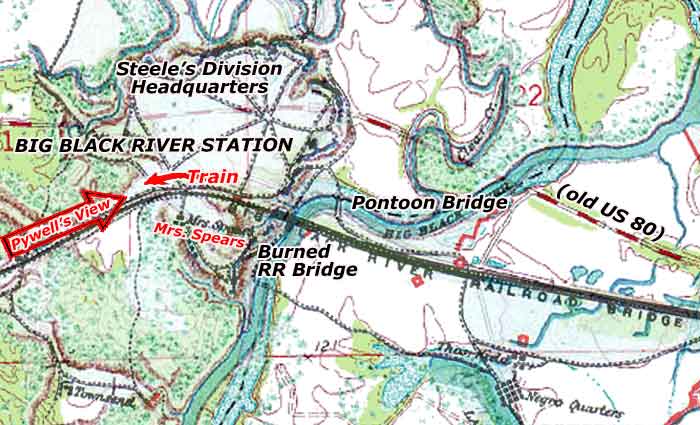
The Union map of Big Black River Railroad Bridge and Vicinity, (Atlas of the Official Records of the Civil War, accompanying reports of Lieut. F. Tunica, U.S. Vol. Engineers), overlaid on the USGS 7.5' Quadrangle map. The Union map is in remarkable agreement with the modern day map especially for the location of the railroad. Map differences can be seen in the meanderings of the Big Black and Clear Creek. Note that, after the railroad bridge was burned by the Confederates, the pontoon bridge was constructed by the Union. Map overlay by James L. Drake |
|
Civil War Locomotives and Cars
|
||||
|
William Redish Pywell, Photographer
|
| Home | Grant's March | Pemberton's March | Battle of Champion Hill | Order of Battle | Diaries & Accounts | Official Records |
| History | Re-enactments | Book Store | Battlefield Tour | Visitors |
Copyright (c) James and Rebecca Drake, 2008. All Rights Reserved.
